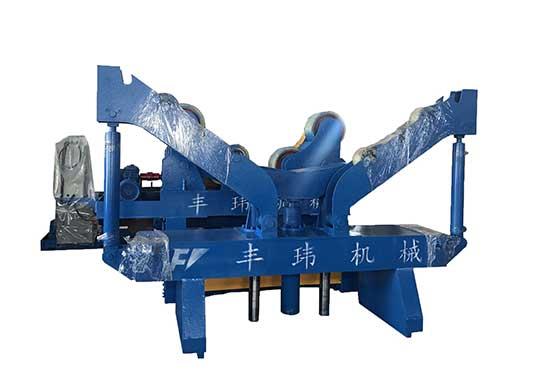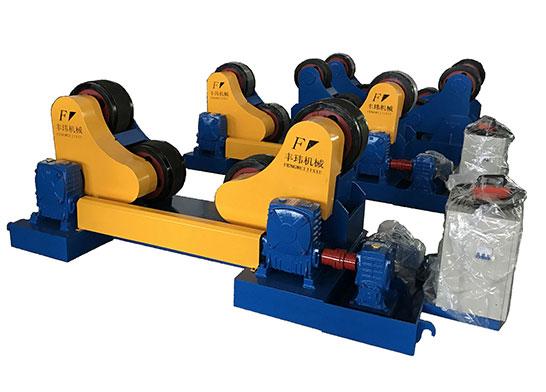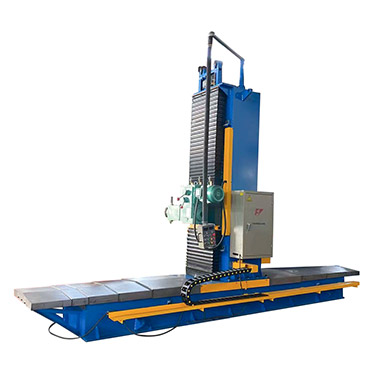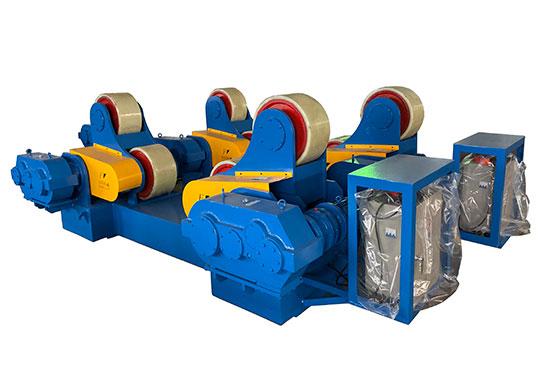When the welder is working, the rollers should always be kept on the same axis, so that the workpiece is not easily deformed and slipped when it is rotated. There are three types of adjustable Turning rollers: manual screw adjustment, manual bolt shift, and electric skateboard shift.
By adjusting the center distance of the rollers, it is suitable for cylinders of different diameters. For example, the aspect ratio of the main and driven rollers can be adjusted appropriately, and some cones and assembly lines can also be welded. For some non-circular long welding parts, if they are installed in a specially made annular pipe hoop, the welding work can also be carried out on the Turning roller. The welding roller frame can also cooperate for manual welding as a machine and equipment for inspection and assembly line cylindrical workpieces. The application of a Turning roller can further improve welding quality, ease labor efficiency and improve efficiency.

Relying on the sliding friction between the welding piece and the roller of the Turning roller, the cylindrical welding piece is driven to rotate, and it is composed of a welding manipulator and a welding positioner to maintain the inner and outer circumferential seams, fillet welds and inner and outer longitudinal seams of the butt welds. Fully automatic welding. Commonly used in the welding of inner and outer circumferential seams and inner and outer longitudinal seams of cylindrical workpieces. It consists of the base, active roller, driven roller, support frame, gear transmission, power system driver, etc. The gear drive drives the positive roller, which uses the sliding friction between the positive roller and the cylindrical workpiece to push the workpiece to rotate and maintain its displacement, which can maintain the leveling of the inner and outer circumferential seams and the inner and outer longitudinal seams of the workpiece. Maintaining fully automatic welding can further improve welding quality, ease labor efficiency, and improve efficiency. Turning rollers can also cooperate for manual welding or as a machine for inspection and assembly line cylindrical workpieces.

In appearance, the Turning roller resembles an upside-down car chassis. Two pairs of front and rear wheels are installed on a rigid frame, one of which is a driven wheel purely for supporting and balancing, and the other is connected with the motor through a gearbox. When the Turning roller works, the driving wheel uses friction to drive the circular workpiece to rotate, and the driven wheel supports the workpiece. Due to the existence of friction, the driven wheel will also rotate with the workpiece, so that the entire welding process is smooth and continuous, which is conducive to the formation of welds with uniform height and size.
The essential work of the turning roller is to support the workpiece and drive the workpiece to rotate at a constant speed so that the surface of the workpiece to be welded forms a uniform outer annular weld or inner annular weld. To meet these work requirements, the rigidity of the Turning roller must be large enough to prevent the relative displacement between the driven wheel and the driving wheel. In addition, regardless of the driven wheel or the driving wheel, the surface of the wheel should be wear-resistant and compressive to improve the service life of the wheel.















